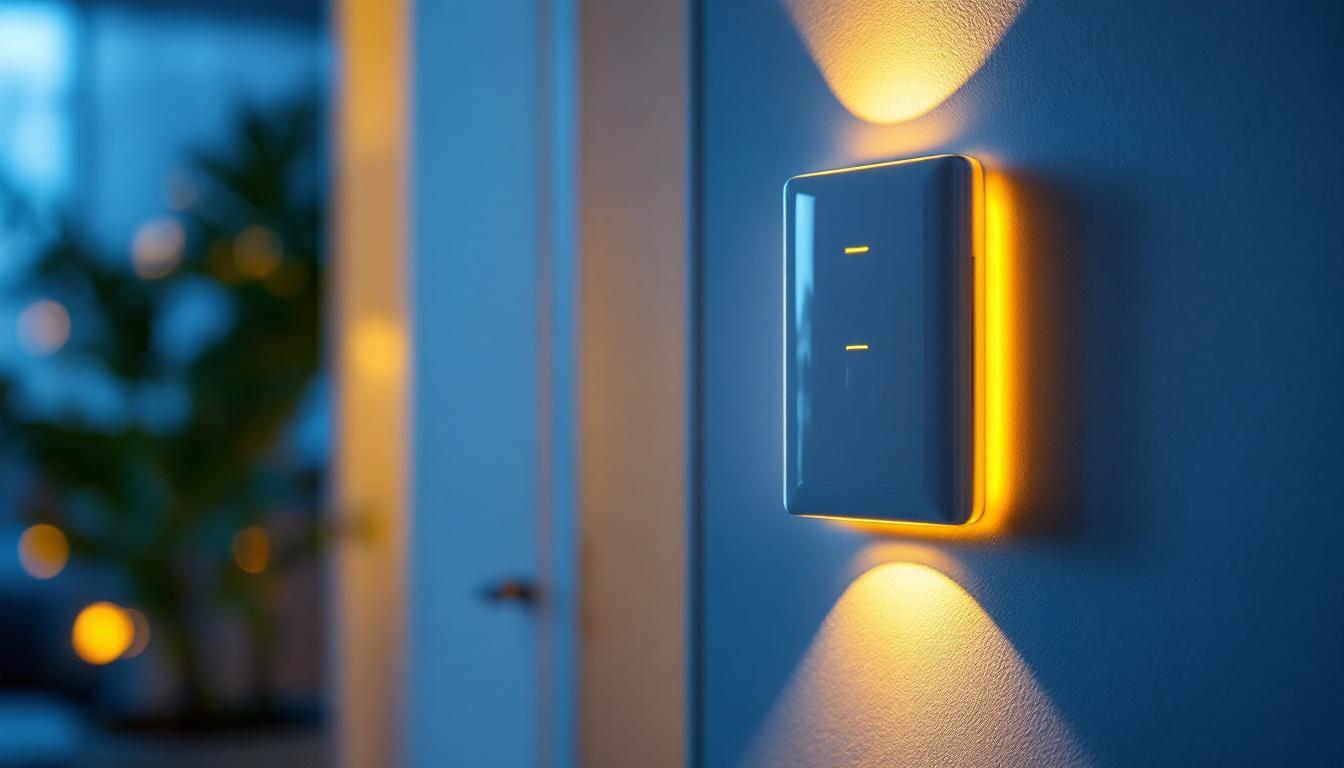
In the ever-evolving landscape of lighting technology, automatic LED lights have emerged as a game-changer for both residential and commercial applications. For lighting contractors, understanding the intricacies of these systems is essential to meet client demands and ensure optimal installations. This article delves into the mechanics, benefits, and practical applications of automatic LED lighting, providing contractors with the knowledge needed to excel in their projects.
Automatic LED lighting refers to lighting systems that can operate without manual intervention. These systems utilize sensors and smart technology to adjust lighting based on environmental conditions, occupancy, and time of day. This section will explore the fundamental components and technologies that make automatic LED lighting systems effective.
At the core of automatic LED lighting systems are several key components that work in unison to create a seamless lighting experience. These include:
Understanding these components is crucial for lighting contractors, as it allows for informed decisions when selecting products and designing systems that meet the specific needs of clients. Additionally, the integration of these components can lead to significant energy savings and enhanced user comfort, as lights can be programmed to turn off automatically in unoccupied spaces or dim when sufficient natural light is present. This not only reduces electricity costs but also contributes to a more sustainable environment by minimizing energy waste.
There are several types of automatic LED lighting systems available, each designed for different applications. Some common types include:
By familiarizing themselves with these types, contractors can better assess client needs and recommend appropriate solutions that enhance both functionality and energy efficiency. Furthermore, the adoption of smart lighting systems is rapidly increasing due to their compatibility with home automation systems. This integration allows users to create complex lighting scenarios that can be tailored to specific activities, such as movie nights or dinner parties, enhancing the overall ambiance of a space. As technology continues to evolve, the potential applications for automatic LED lighting are expanding, paving the way for innovative solutions that cater to both residential and commercial environments.
The adoption of automatic LED lighting brings numerous advantages, making it a compelling choice for both contractors and clients. Understanding these benefits can help contractors effectively communicate the value of these systems to potential customers.
One of the most significant benefits of automatic LED lighting is its energy efficiency. Traditional lighting systems often operate at full capacity regardless of occupancy or natural light levels. In contrast, automatic LED systems adjust their output based on real-time conditions, significantly reducing energy consumption.
This not only lowers electricity bills but also contributes to a more sustainable environment. For contractors, promoting energy-efficient solutions can be a strong selling point, appealing to environmentally conscious clients.
Automatic LED lighting systems enhance convenience by eliminating the need for manual operation. For instance, motion-activated lights provide immediate illumination when entering a room, while smart lighting systems allow users to control their lights from anywhere.
This level of convenience can greatly improve the user experience in both residential and commercial settings. Contractors should emphasize these comfort aspects when discussing installation options with clients, as they can significantly influence purchasing decisions.
Safety and security are paramount concerns for many clients. Automatic LED lighting systems, particularly motion-activated lights, can deter potential intruders by ensuring that areas are well-lit when movement is detected.
In addition, well-lit environments reduce the risk of accidents, such as trips and falls. By highlighting these safety benefits, contractors can position automatic LED lighting as a necessity rather than a luxury, further enhancing its appeal to clients.
When installing automatic LED lighting systems, contractors must consider various factors to ensure optimal performance and client satisfaction. This section outlines essential installation considerations that can help contractors deliver exceptional results.
Before installation, conducting a thorough site assessment is crucial. This involves evaluating the space to determine the best locations for fixtures and sensors. Factors such as room layout, natural light sources, and potential obstructions should be taken into account.
By performing a comprehensive site assessment, contractors can design a lighting system that maximizes efficiency and effectiveness, ultimately leading to a more satisfied client.
Selecting the appropriate sensors is vital for the success of an automatic LED lighting system. Different sensors have varying ranges, sensitivities, and functionalities. For instance, a motion sensor may be ideal for hallways and staircases, while daylight sensors are more suited for spaces with large windows.
Contractors should familiarize themselves with the specifications of different sensors to ensure they select the right ones for each application. This knowledge will not only enhance system performance but also demonstrate expertise to clients.
Proper wiring and control systems are essential for the seamless operation of automatic LED lighting. Contractors must ensure that wiring is installed correctly to prevent issues such as flickering or inconsistent performance.
Additionally, understanding the control systems available is crucial. Some systems allow for remote control and programming, while others may require manual adjustments. Contractors should choose systems that align with client preferences and project requirements.
Automatic LED lighting systems can be applied in various settings, each with unique requirements and benefits. This section explores some common applications, providing contractors with insights into how these systems can be utilized effectively.
In residential settings, automatic LED lighting enhances convenience and energy efficiency. Common applications include:
By understanding these residential applications, contractors can tailor their proposals to meet the specific needs of homeowners, ultimately increasing the likelihood of successful installations.
In commercial settings, automatic LED lighting contributes to energy savings and improved safety. Key applications include:
By recognizing the diverse commercial applications, contractors can position themselves as knowledgeable professionals capable of addressing the unique challenges faced by businesses.
The field of automatic LED lighting is constantly evolving, with new technologies and trends emerging regularly. Staying informed about these developments can give contractors a competitive edge in the marketplace.
As smart home technology continues to gain popularity, the integration of automatic LED lighting with other smart devices is becoming increasingly common. This allows for seamless control of lighting alongside other home systems, such as thermostats and security cameras.
Contractors should be aware of these integration possibilities, as they can offer clients a more comprehensive solution that enhances the overall functionality of their homes.
Sensor technology is advancing rapidly, leading to more sophisticated and reliable systems. New sensors are being developed that can detect not only motion but also changes in temperature, humidity, and even air quality.
These advancements open up new possibilities for automatic LED lighting systems, allowing for even greater energy savings and improved user experiences. Contractors should keep an eye on these developments to ensure they are offering the latest and most effective solutions to their clients.
With growing awareness of environmental issues, there is an increasing demand for sustainable and eco-friendly lighting solutions. Automatic LED lighting systems, with their energy-saving capabilities, align perfectly with this trend.
Contractors who emphasize the sustainability aspect of automatic LED lighting can appeal to environmentally conscious clients, positioning themselves as leaders in eco-friendly practices within the industry.
Automatic LED lighting systems represent a significant advancement in lighting technology, offering numerous benefits for both contractors and clients. By understanding the components, advantages, and applications of these systems, lighting contractors can effectively meet the needs of their clients while promoting energy efficiency and safety.
As the industry continues to evolve, staying informed about the latest trends and technologies will be crucial for contractors looking to maintain a competitive edge. By embracing automatic LED lighting solutions, contractors can enhance their offerings and contribute to a more sustainable future in lighting.
Ready to elevate your lighting projects with the latest in automatic LED technology? At LumenWholesale, we provide lighting contractors like you with the highest quality, spec-grade lighting products at prices that can’t be beaten. Say goodbye to local distributor markups and hello to a vast selection of reliable, high-performance lighting that meets the strictest industry standards. With free shipping on bulk orders, you can stock up on superior lighting solutions without worrying about hidden fees. Don’t compromise on quality or value—choose LumenWholesale for the perfect blend of affordability and convenience. Wholesale Lighting at the Best Value is just a click away.

Discover how lighting contractors are transforming spaces with 12V LED ribbon lights.

Discover the latest trends shaping the lighting industry in “7Bled: Trends Every Lighting Contractor Should Know.” From innovative technologies to sustainable practices, this guide equips contractors with essential insights to stay ahead in a rapidly evolving market..

Explore the advantages and challenges of using sconces in lighting projects.

Discover the latest advancements in energy-efficient lighting with the new light switch technology.